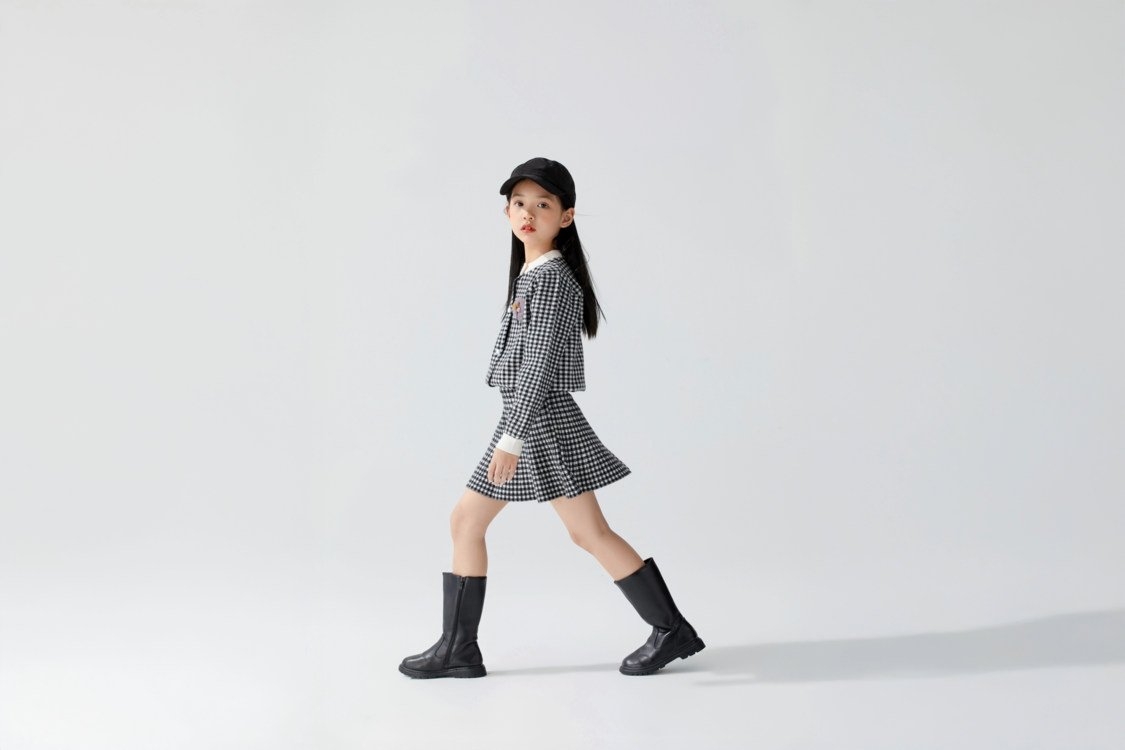October 2024
Why clothing sizes are inconsistent across brands
Ludimila Borderes

It would be great if customers could confidently buy the same size across different brands, but the truth is that consumers tend to wear different sizes in different brands.
One brand’s medium could be another brand’s large; a size 8 dress from one store could have the same dimensions as the size 10 from another.
This naturally leads to quite a lot of confusion on the part of customers, and leads to difficulty in shopping online and high return rates. But there are good reasons for it.
In this article, you’ll learn why brands implement different sizing, current size standardization and universal body measurements efforts, as well as how online fashion stores can take the guesswork out of choosing the right size.
Different brand, different sizing
Sizing variation across brands is due to brands using different fit models based on the customers they’re targeting.
There’s also the fact that sizing can be difficult to standardize as clothing itself isn’t standard; some garments are meant to be oversized, others more tight fitting. Vanity sizing also adds to the confusion and is largely responsible for size discrepancies over the years.
Let’s take a closer look at these reasons that explain size variation across brands.
Brands use different fit models
Different brands target different customers, and as a result, different body types. Consider a brand targeted at bodybuilders versus a brand that targets petite or plus-sized women.
Brands use different fit models that best align with their vision of their ideal customers.
There are obviously huge differences in body types and shapes, which is why sizing varies across brands. Instead of tailoring their clothing to meet some kind of universal standard, brands make sizing choices aimed at their specific target audience.
When creating initial samples, brands usually use a fit model that represents the middle of their size range. Through a process called grading, brands then create additional smaller and larger sizes based on the sample size.
In short, brands target different bodies which means they use different fit models, and using different fit models leads to different sizing.
Clothes aren’t meant to fit the same
As an expression of style, different clothing pieces are designed to fit differently. Wearers prefer different fits, and designers create varied silhouettes to cater to different preferences, occasions, and styles.
A pair of skinny jeans is meant to fit snugly, accentuating the body’s contours, while a loose-fitting sundress prioritizes comfort and a carefree aesthetic.
This vast diversity in clothing designs and intended fits helps explain the lack of size standardization not only among brands, but even within a brand’s own collections.
Sizing and fit relativity emphasize the importance of considering the specific design and intended style of each garment. It encourages consumers to prioritize personal comfort and their desired look rather than adhering strictly to numerical size labels.
In navigating the world of fashion, embracing the individuality of garment sizing allows for a more nuanced and satisfying shopping experience.
Vanity Sizing
Vanity sizing is the practice of labeling clothing with a size that’s smaller than the actual cut of the garment.
It’s basically a psychological trick to try and make shoppers feel skinnier and boost their self-esteem. The objective is to flatter and gratify consumers by implying they fit into a smaller size, with the hopes of fostering a positive association with the brand.
While vanity sizing may enhance customer satisfaction and confidence, it contributes to the overall confusion surrounding garment sizing, and partly explains why shoppers wear different sizes across various brands.
Size standardization
Despite the reasons presented above, could it be possible to implement standard sizing in the fashion industry?
While different organizations have already put out standard sizing measurements, the truth is that brands don’t want to implement universal sizing – and that’s a good thing.
Bodies are not standardized
Universal sizing is great in theory. If a customer knows what size they are, they can confidently buy that size in any online clothing store.
But in practice, universal sizing as this Vox article states, “would actually make it harder to buy clothes by limiting the shapes and dimensions available for our diverse bodies.”
This is because standard body measurements are based on data. And that data will always be limited to the number and types of bodies sampled.
Every human body is its own sample size of one. As such, standard measurements and sizing will never be able to capture the nuances and unique fit and style preferences of every single shopper.
Instead of universal sizes, customers can make more assertive decisions while buying clothing online through the use of virtual fitting rooms and size recommendation tools.
Standard sizing measurements
ASTM International has released international standards of body measurements to “assist manufacturers in developing patterns and garments that are consistent with the current anthropometric characteristics of the population of interest.”
Populations of interest include “Mature Men, ages 35 and older, Sizes Thirty-Four to Fifty-Two (34 to 52) Short, Regular, and Tall” and “Adult Female Misses Figure Type, Size Range 00–20”
In 2017, the International Standards Organization (ISO) updated its own clothing standards.
These included ISO 8559-1, listing standard body measurements, and ISO 8559-2, with recommendations of garment dimensions to meet those measurements.
The aim of ISO 8559-2 is to “establish a size designation system that can be used by manufacturers and retailers to indicate to consumers (in a simple, direct and meaningful manner) the body dimensions of the person that the garment is intended to fit.”
But standards alone don’t guarantee widespread adoption, which remains a complex task and difficult to implement. Especially since most fashion labels prefer to follow their own sizing charts to cater to their distinct customer bases.
Brands don’t want standard sizes
Whether it’s an athleisure apparel brand targeting postpartum mothers, or a high-end luxury fashion label, brands design garments differently.
The fit, design, and measurements of a brand’s clothing are a form of intellectual property. It’s the reason internal sizing charts are such closely guarded secrets.
How a particular brand’s garments fit is often how shoppers choose one brand over another, and develop preferences.
In this way, clothing size variation among brands actually allows the market to better meet unique sizing demands.
Even without universal sizing, brands can improve their customer experience and foster loyalty through personalized recommendation experiences.

Sizing Clothing: How to Get It Right If You Sell Clothing
If you run a clothing brand, you probably already know that sizing clothing isn’t just about picking numbers. It’s a strategic decision that affects everything, from product development and inventory management to conversion rates and return volumes. And in e-commerce, where customers can’t try before they buy, getting your sizing system right is one of the most powerful ways to build trust.
If your brand is designing its own fit or refining an existing one, here’s how to approach sizing clothing with confidence:
Define Your Fit Philosophy
Every brand has a point of view on how clothes should fit. Are you designing for comfort or structure? For a relaxed lifestyle or a tailored look? Your fit philosophy should guide your sizing approach.
Start by answering:
- Should garments run true to size, generous, or slim?
- Will your cuts vary between categories (e.g. tops vs. bottoms)?
- Are you designing for a specific body shape, region, or demographic?
This clarity helps you create consistent proportions across your product line, and gives you a strong foundation to build your size chart around
Build a Reliable Base Size
Most clothing brands use a base size (also called a sample size) that serves as the foundation for grading up or down. The base size should reflect the average measurements of your target customer.
If you’re creating your own fit block, start with actual body data. You can source this through:
- Body measurement studies in your region.
- Fit model sessions using your intended demographic.
- AI and analytics tools that collect data from online shoppers.
Grade Thoughtfully Across Sizes
Once your base size is solid, grading fills in the rest. But grading isn’t just a matter of scaling each size up by fixed amounts. Body proportions change as sizes increase or decrease. For example, shoulders don’t grow as quickly as bust or hip measurements. Meanwhile, petite and plus-size consumers often need adjustments to length, rise, or curve, and not just width.
This is where thoughtful grading makes the difference between a garment that fits okay and one that fits perfectly. It also helps reduce returns due to poor proportions in extended sizes.
Test, Refine, Repeat
Properly sizing clothing is an ongoing process. As your brand grows and your audience evolves, you’ll want to revisit your size chart regularly.
Keep an eye out for frequent returns due to sizing. Always review customer feedback requesting more inclusive sizing. And take into consideration shifts in your buyer demographics or geographic markets.
Making adjustments based on data shows your customers you’re listening, and helps keep your sizing strategy aligned with their needs.
Sizing clothing with intention, and communicating it clearly, improves the entire shopping experience. The next step is making sure that your shoppers are able to pick out their perfect size.
Simplifying online shopping without universal sizing
When shopping online, customers often struggle to find the right size. In the UK, incorrect sizing or fit was the reason for 93% of clothing returns.
This high rate of returns presents challenges for both shoppers and retailers, whose bottom line is seriously impacted.
But as we’ve seen, universal sizing would do little to lower the rate of return since customers’ unique preferences aren’t guaranteed to be met. So what can be done?
Comprehensive size chart and body measurements
To be most effective, size charts need to include body measurement ranges that each size is intended to fit, in addition to garment measurements.
Body measurement ranges give shoppers a better idea of which size to pick based on their own preferences, and is especially useful when dealing with stretchy fabrics.
But while helpful, measurements are only useful if shoppers have a measuring tape at home – which most do not. And even if they do, there’s a good chance they don’t know how to take accurate measurements.
Virtual fitting rooms with statistical recommendation systems
Some virtual fitting rooms use statistical algorithms to recommend sizes based on user characteristics. These algorithms draw from a database to predict past satisfaction rates.
For example, a 43-year old woman who’s 5´3 and 110 pounds, might have an 80% chance of being happy with a small, based on similar profiles and past return rates.
Common solutions in the market estimate body measurements using weight, height, and age, and give users the option to fine-tune their body measurements. This approach establishes a reliable pattern, building consumer trust and addressing e-commerce challenges.
The drawback is that these models don’t take into consideration users’ style preferences. For instance, those who prefer oversized clothing may feel neglected, with the information that there’s a 76% chance the clothing will fit without considering their fit preferences.
Virtual fitting rooms with anthropometric recommendation systems
Anthropometry-based recommendation tools collect body data (weight, height, age) and validate body mass distribution with precise estimates of up to 7 body measurements.
This model requires online stores to provide product measurement tables. By combining user body data with product measurements, the algorithm generates specific size suggestions.
Using real body data and product measurement tables, this results in more personalized recommendations compared to statistical models. Users can also assess how loose or tight each size will fit.
For these recommendation tools to remain effective, stores need to keep their size charts up-to-date and monitor their assertiveness.
Sizes should be universal to collections, not brands
Since brands design clothes for different body types, implementing standard size charts is not only difficult but also limits clothing choices for shoppers.
Instead, brands should focus on keeping their own sizing consistent along with keeping size charts up-to-date and providing size recommendations that take into account customer preferences.
At the end of the day, universal sizing isn’t what customers want. They want to be able to easily buy clothing that fits them well.
If you’d like to learn more about creating an assertive shopping experience for customers, make sure to read our article about measurement tables.










